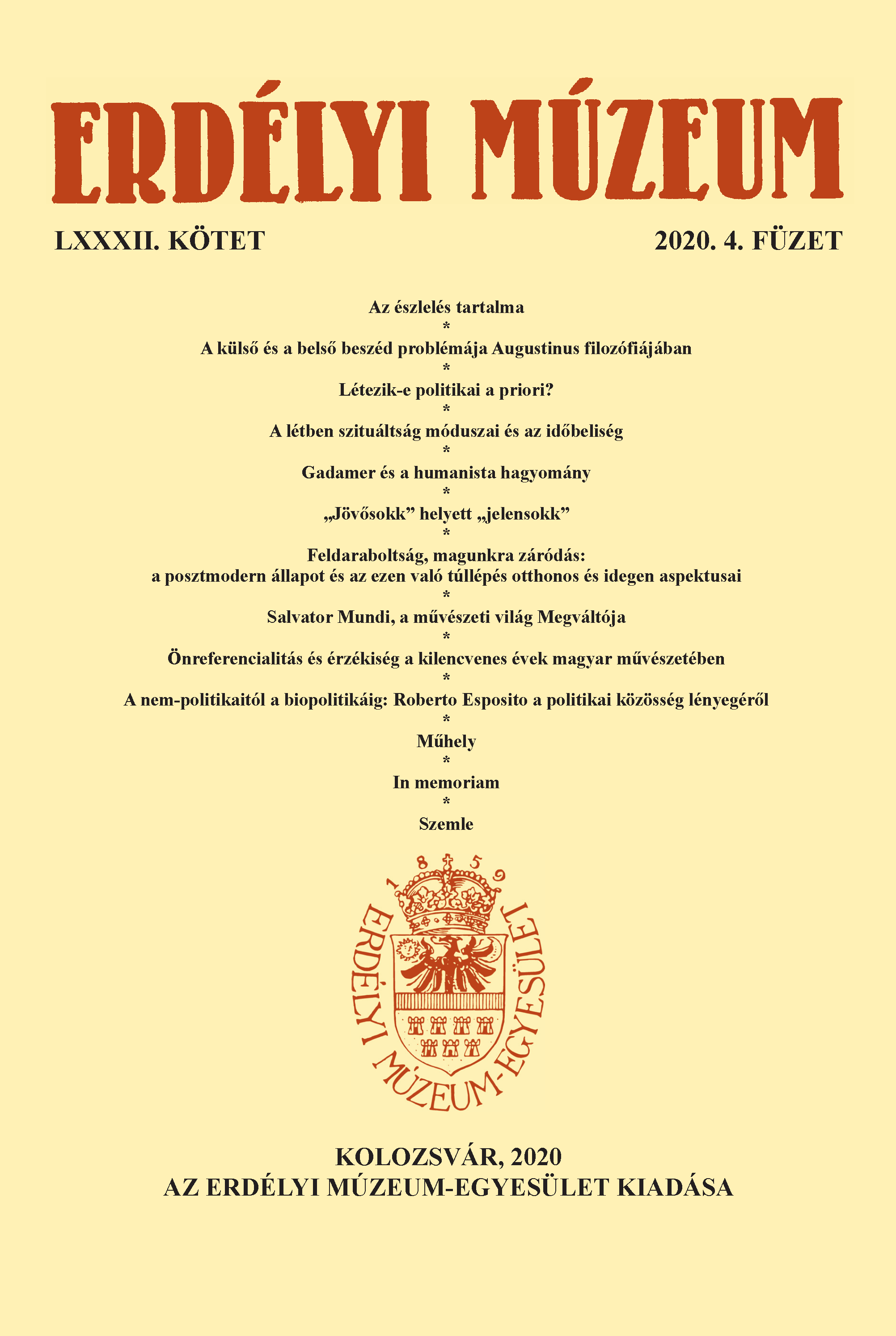Önreferencialitás és érzékiség a kilencvenes évek magyar művészetében
Self-Referentiality and Sensuality in the Hungarian Art of the Nineties
Author(s): Sándor BarthaSubject(s): Semiology, Culture and social structure , Theory of Communication, Sociology of the arts, business, education, Sociology of Art, History of Art
Published by: Erdélyi Múzeum-Egyesület
Keywords: self-referentiality; contemporary Hungarian art; installation; classical conceptualism; neoconceptualism;
Summary/Abstract: The study deals with self-referentiality as one of the defining aspects of the Hungarian art of the ’90s looking for answers to the following questions: What changes took place in the nineties in the field of self-referential works compared to the same type of works from the 1960s-1970s? Can the effect of neoconceptualism be demonstrated on the self-referential works of the Hungarian art of the 1990s? Analyzing the artistic activity of three Hungarian artists of the 1990s (Gyula Várnai, Szabolcs KissPál, Emese Benczúr) it can be stated that if in the works of the 1960s and 1970s the self-referential aspect is present as a simple structural element, easily “readable”, the self-referentiality of the 1990s is much more sophisticated and hidden. At the same time, one can demonstrate an accentuated sensuality compared to the works of classical conceptualism, an aspect that can be attributed to the spirituality of the contemporary Hungarian art of the 1990s.
Journal: Erdélyi Múzeum
- Issue Year: LXXXII/2020
- Issue No: 4
- Page Range: 89-97
- Page Count: 9
- Language: Hungarian

